Alternative Energies
Keith Lambert
Energy Storage
Emerson
Wind
Jerry Burhans
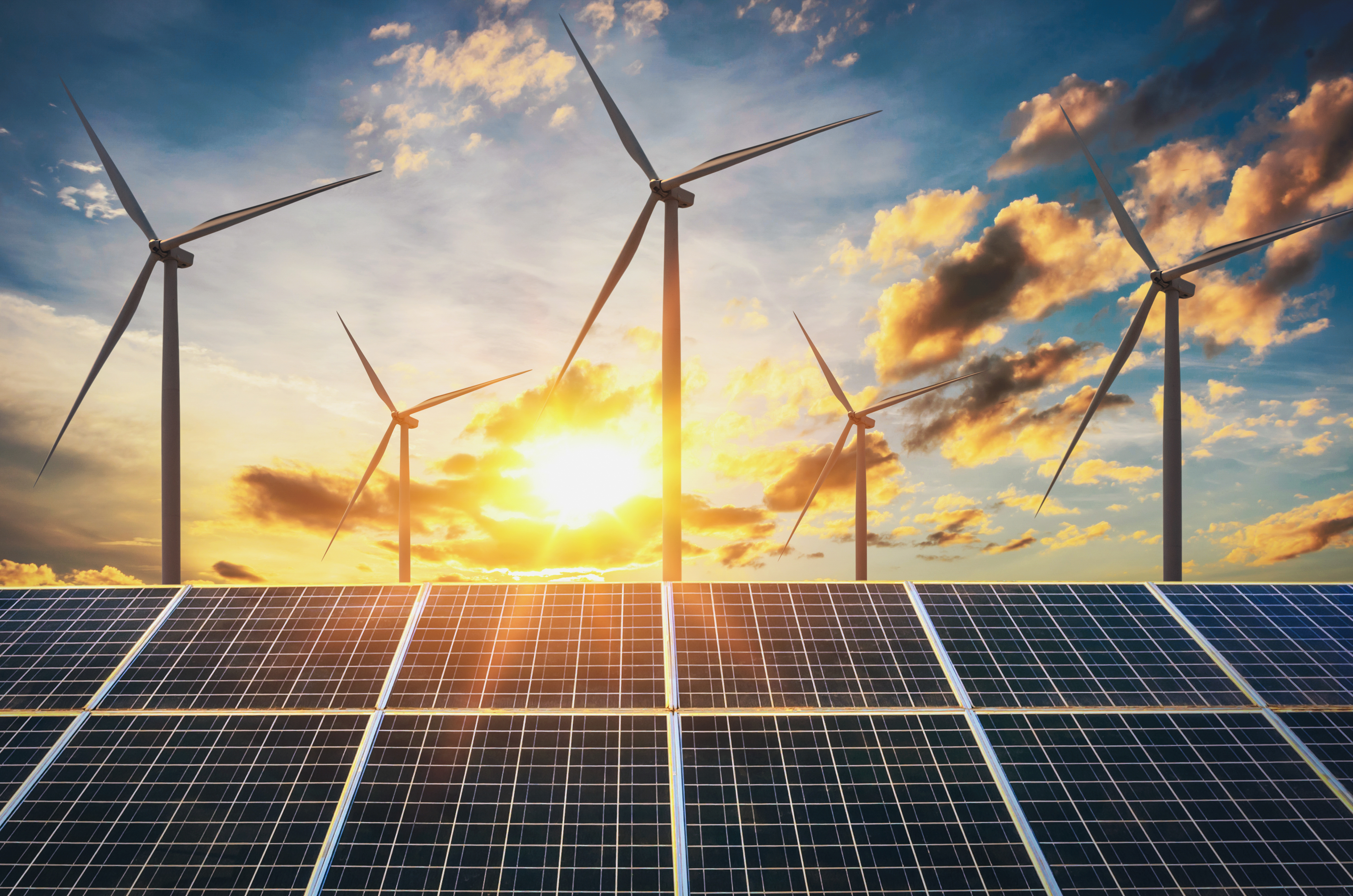
rPlus Energies, a leading private renewable energy developer, has finalized a long-term power purchase agreement (PPA) with Idaho Power for the 125-megawatt (MW) Pleasant Valley Solar 2 facility in Ada County, ID. The first phase of this project, the 200 MW Pleasant Valley Solar 1, was also developed by rPlus Energies and is under construction. Both projects will deliver solar energy to Idaho Power’s grid and support Meta’s goal to operate its nearby data center in Kuna, ID with 100% renewable energy.
“We’re excited to expand our work with Idaho Power and rPlus Energies to add new renewable energy to the Idaho grid with Pleasant Valley Solar 2,” said Urvi Parekh, Global Head of Clean and Renewable Energy, Meta. “Efforts like these are important as we continue to support our operations with 100% clean and renewable energy.”
This project is being developed through Idaho Power’s Clean Energy Your Way – Construction Program, which provides options for businesses looking to meet corporate sustainability or carbon emission goals.
“Moving toward a clean energy future requires collaboration between energy providers and customers,” said Adam Richins, Idaho Power Senior Vice President and COO. “We’re excited to be able to work with Meta and rPlus Energies through our Clean Energy Your Way program to help them reach their goals while furthering our mission of providing reliable, affordable, and increasingly clean energy to our customers.”
Pleasant Valley Solar 2 will continue the expansion of solar resources in Idaho and build on the success of Pleasant Valley Solar 1, which is now majority-owned by Matrix Renewables and set to reach commercial operation in early 2025.
“We’re excited to be partnering again with Idaho Power and Meta on Pleasant Valley Solar 2,” said Luigi Resta, President and CEO of rPlus Energies. “Strong partnerships make all stages of development and construction smoother, and we certainly have that with these two. We look forward to breaking ground in the coming months and contributing another significant project to Idaho’s renewable energy landscape.”
Construction of Pleasant Valley Solar 2 is slated to begin in late 2024 with plans to engage numerous local vendors throughout the process—boosting revenue for the region, supporting local businesses, and creating approximately 200 construction-related jobs. Notably, some of the key investor and commercial partners in Pleasant Valley Solar 1 collectively raised $123,000 for the Local First and Energy First scholarships, benefiting Ada County students attending Boise State University and the College of Western Idaho. This commitment to supporting education and workforce development in Idaho will carry on with Pleasant Valley Solar 2.
rPlus Energies | https://www.rplusenergies.com/
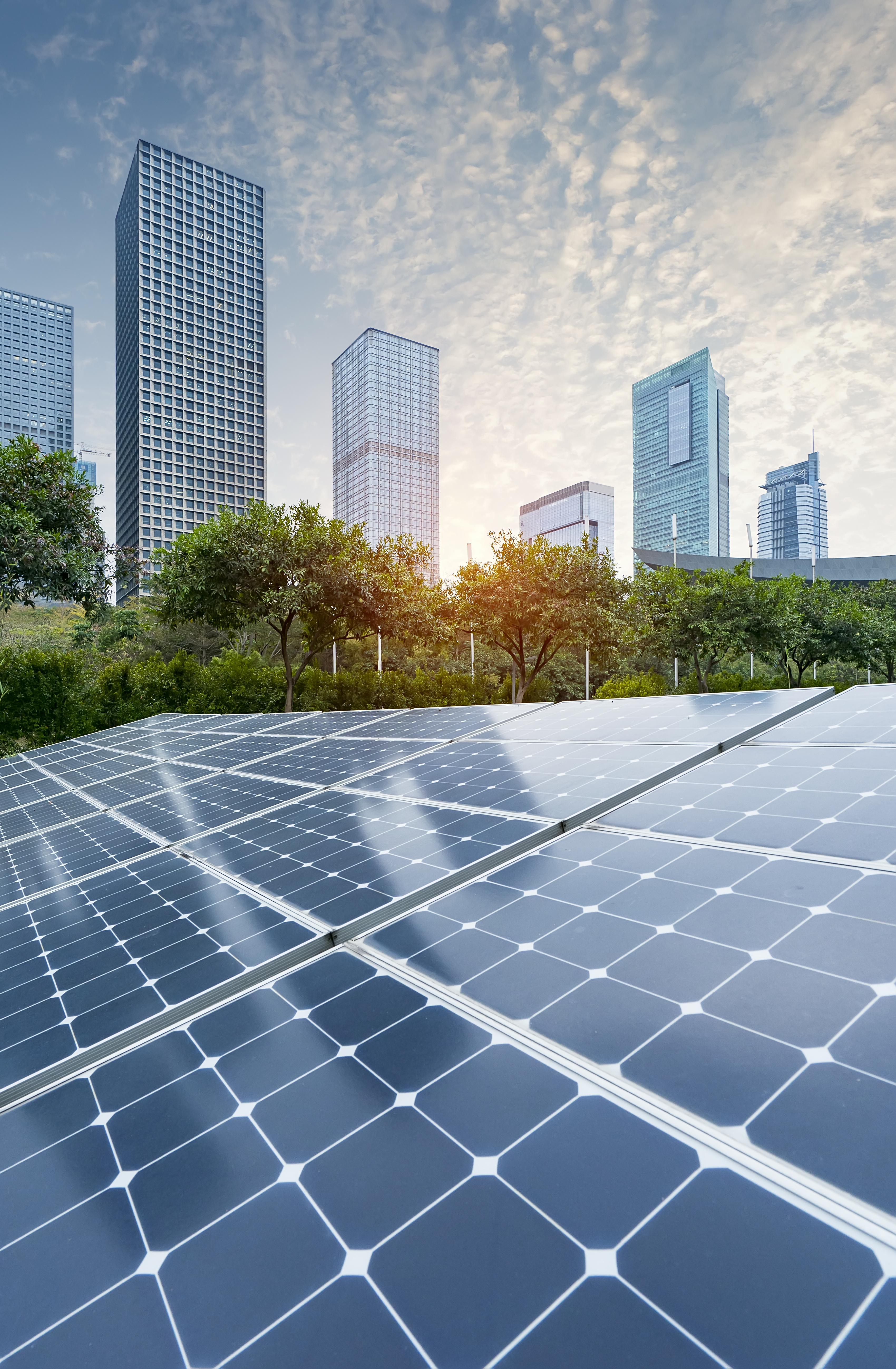
Sungage Financial, a leading provider of residential solar financing, has entered into a partnership with BayWa r.e. Solar Systems, a distributor of residential and commercial solar and storage equipment. This alignment will help streamline the residential solar financing and equipment procurement process for shared installers.
This mutually-beneficial partnership will enable installer partners to order equipment from BayWa r.e. with no cash upfront and allot Sungage-specific funds to pay for equipment once a project funds. With the implementation of this seamless process, installers will be able to maintain cash flow, focus on their bottom lines and grow their project pipeline.
“We are pleased to announce our partnership with BayWa r.e., which aligns with our commitment to making solar energy more accessible. This collaboration will enhance our installer partners experience, while streamlining the financing process,” said Sungage Financial CEO Michael Gilroy.
"BayWa r.e.'s split pay financing program is dedicated to helping our customers build stronger businesses, alleviating working capital constraints. We are excited to expand our program offering to now include Sungage. Through our partnership with Sungage, our customers will have access to competitive financing that translates to higher in-home conversions, resulting in more solar and storage being deployed in the U.S.,” said Ken Lima, CEO of BayWa r.e.
Sungage Financial | www.sungagefinancial.com
BayWa r.e. Solar Systems | www.solar-distribution.com

Nautilus Solar Energy, a leading national community solar company, announced the opening of a 7.0 MW community solar project located on a remediation site in Sanford, Maine. The Nautilus Solar team worked with Walden Renewables Development LLC (the original developers), to finalize this innovative project which demonstrates how compromised land can be transformed into a productive source of clean energy and driving economic growth.
This project, now fully operational, will provide clean, renewable energy to over 960 subscribers in the Central Maine Power (CMP) utility territory. Nautilus Solar is the long-term owner of the facility, ensuring ongoing performance, energy production, and customer savings for years to come.
“We are thrilled to partner with the Walden team and the City of Sanford to find a creative solution for repurposing the contaminated site into a source of clean energy for the local community,” said Laura York, Vice President of Structuring at Nautilus Solar. “This project not only helps Maine achieve its ambitious renewable energy goals but also offers tangible savings to residents and businesses who otherwise wouldn’t have access to solar energy.”
The Sanford project qualifies under Maine’s Net Energy Billing (NEB) program, which is part of the state’s commitment to reaching 80% renewable energy by 2030 and 100% by 2050. This project enables Maine residents and businesses to subscribe to Nautilus Community Solar, offering them the opportunity to save money on their electric charges without needing to invest in or install solar panels on their rooftops.
The solar farm is situated on a combination of city-owned land and abutting property belonging to the Maine Turnpike Authority. Once home to CGA Inc., a circuit board recycling facility, this project reflects a unique partnership with the City of Sanford, helping the city achieve its environmental and economic ambitions. In addition to the clean energy it generates, the solar farm provides a stable source of revenue for the City through lease payments, and the creation of job opportunities.
“We were very pleased to work with Nautilus on this important project,” said Henry Weitzner, CEO of Walden Renewables Development. “The transformation of the heavily contaminated CGA brownfield site in Sanford to a remediated site for a solar farm is a great success story and involved extensive collaboration with Maine DEP, the City of Sanford, US Army Corps and the Maine Turnpike Authority. We are thrilled to see the project now operating for Nautilus.”
The Sanford CGA community solar project is part of the Nautilus Solar broader portfolio of community solar initiatives across Maine and the United States
Nautilus Community Solar | www.nautilussolar.com
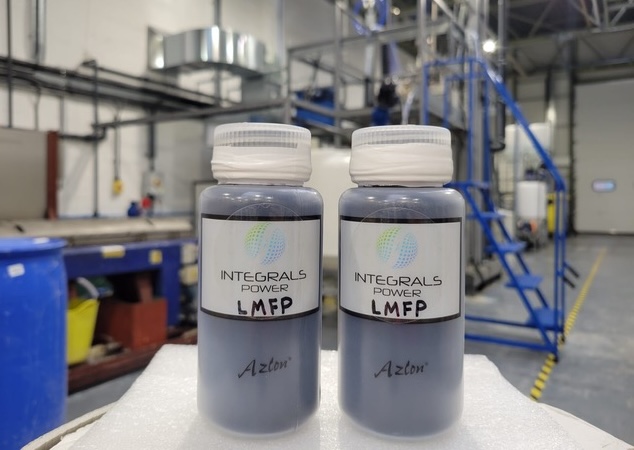
Integrals Power, a pioneering producer of next-generation battery materials, is pleased to announce that it has begun distributing samples of its Lithium Iron Phosphate (LFP) and Lithium Manganese Iron Phosphate (LMFP) battery cathode materials to customers across the battery manufacturing, energy storage, and electric vehicle (EV) sectors – including global OEMs – in both Europe and the United States.
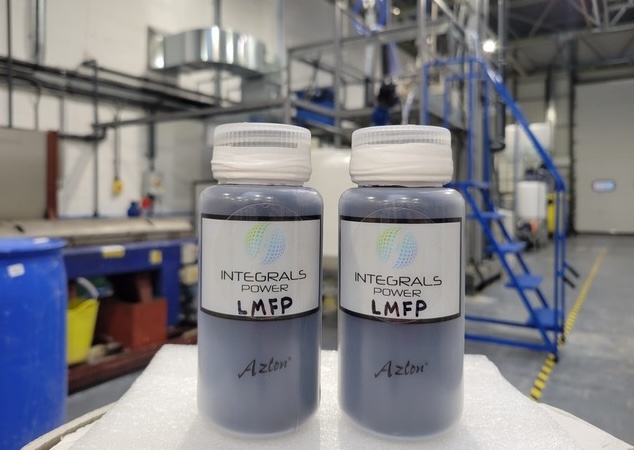
This significant milestone follows the successful production of these materials at Integrals Power’s UK pilot plant, positioning the company as a key supplier in the global push for sustainable energy solutions.
The LFP and LMFP cathode materials, which are critical components in lithium-ion batteries, were fully manufactured in the UK. This not only underscores Integrals Power’s commitment to advancing domestic manufacturing capabilities but also ensures the highest purity, quality and performance standards. These samples are now being distributed to key players in Europe and the US, enabling them to evaluate Integrals Power’s cutting-edge cathode materials for integration into their products.
Integrals Power Founder and CEO, Behnam Hormozi commented: “We are thrilled to begin distributing these samples to our customers in the EU and US. The fact that these materials were manufactured on our UK pilot line is a proud achievement, and we are excited to see how they perform in the real-world applications of our customers in the EV, battery manufacturing, and energy storage sectors.”
LFP has garnered global attention for its safety, long cycle life, low-temperature performance, and sustainability benefits. As demand for electric vehicles and energy storage systems continues to surge, this material is seen as a critical enabler of the green energy transition, and is accounting for a growing share of the global battery market: the International Energy Agency reports that in 2023, LFP supplied more than 40 per cent of global EV demand – more than double its share in 2020.1
Building on the strengths of LFP, LMFP adds manganese to the mix, increasing energy density by up to 20% while maintaining the safety and cost-effectiveness that LFP is known for. Integrals Power achieved a breakthrough in reaching an 80 per cent manganese content instead of the 50-70 per cent typically found in existing blends: this offers greater performance in applications such as EVs, enabling it to compete with Nickel-Cobalt-Manganese chemistries while being more affordable and less reliant on critical minerals.
By offering these high-quality, UK-manufactured cathode materials, Integrals Power provides its customers with the opportunity to review, test, and, ultimately, integrate the materials into their battery and energy storage solutions. This close collaboration will help foster innovations that are essential to meeting the world’s growing demand for clean energy technologies and reduce reliance on China for these strategically important assets.
With its advanced pilot line in the UK, Integrals Power is uniquely positioned to contribute to the growth of the global battery supply chain. The company's focus on producing innovative cathode materials aligns with the rising demand for efficient, scalable, and environmentally-friendly energy storage solutions. As the world transitions to cleaner energy, Integrals Power remains at the forefront of this exciting movement.
1 Global EV Outlook 2024; Trends in electric vehicle batteries
Integrals Power | https://integralspower.co.uk/
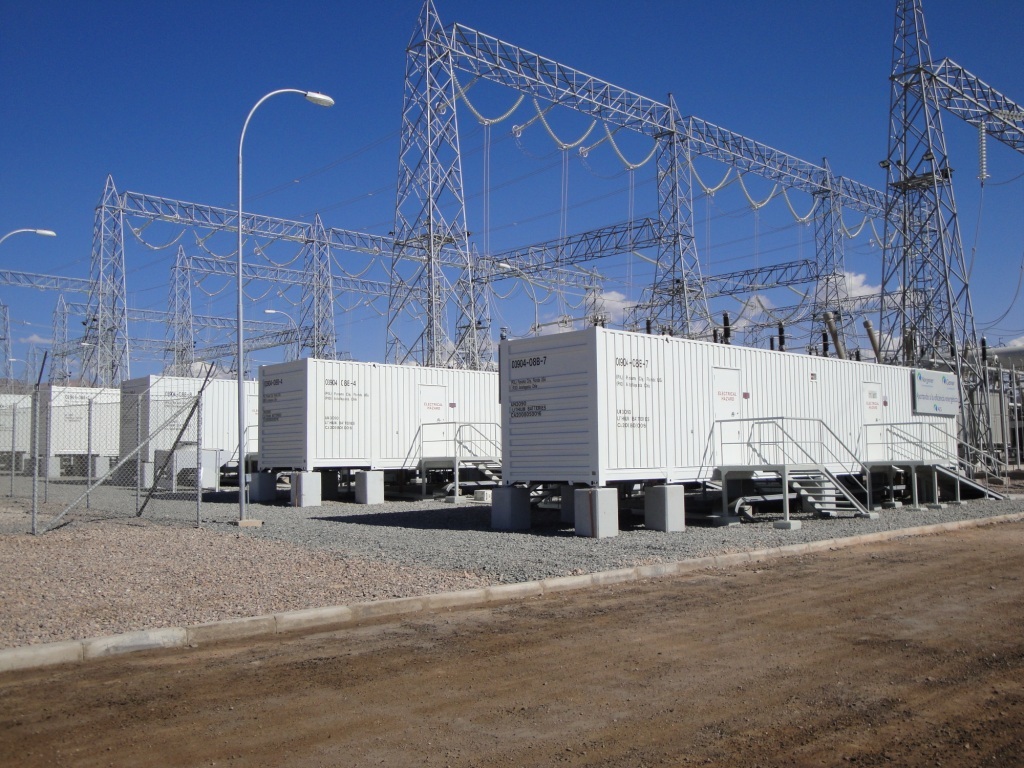
Hillcrest Energy Technologies Ltd. (CSE: HEAT) (OTCQB: HLRTF) (FSE: 7HI) is pleased to announce that its Zero-Voltage Switching (ZVS) traction inverter prototype is expected to provide cost efficiency, offering significant savings for electric vehicle (EV) manufacturers.
According to recent analysis conducted by IDTechEx analyzing electric vehicles (EVs) from 2013 to 2023, there is a clear trend toward a significant reduction in die area per kilowatt (kW) of power. This trend underscores the industry's focus on producing smaller, more efficient and cost-effective inverters to meet the demands of next-generation EVs.
The IDTechEx analysis reviewed power density advancements across various EV models, including the Toyota Prius, Polestar 2, BMW i3, and Kia EV6. Based on this data, IDTechEx projects that, by 2035, many EV inverters will achieve a die area per kW below 4 mm². Hillcrest's ZVS traction inverter, however, has already surpassed this future benchmark at 3 mm²/kW.
Die area per kilowatt refers to the physical area of the semiconductor dice (or chips) in the inverter that are required to handle a certain amount of power, measured in kilowatts (kW). In simpler terms, it's an indicator of how efficiently the inverter's semiconductors are used.
By achieving lower die area per kilowatt, Hillcrest's ZVS traction inverter is optimizing the physical semiconductor area required for power handling. This innovation reduces material use and costs, while Hillcrest's high-efficiency design can cut energy losses, improve performance and extend the lifespan of EV systems—further lowering operational costs for manufacturers and consumers alike.
"Our ZVS technology not only enhances efficiency but also enables substantial cost savings, underscoring Hillcrest's commitment to high-performance, cost-effective power electronics for EVs," said Don Currie, CEO of Hillcrest Energy Technologies. "The knowledge gained from demonstrations and discussions with potential customers and development partners is invaluable. In many cases, cost savings and design are just as important as performance—a fact Hillcrest has listened to and delivered on with our ZVS innovation. By significantly reducing electromagnetic interference (EMI) and eliminating switching losses, our inverter offers manufacturers both a cost and design advantage in EV power systems."
The 350 kVA Silicon Carbide (SiC) inverter prototype, integrated with Hillcrest's proprietary ZVS technology, is expected to offer automakers a competitive edge in cost-effective design. Its efficiency and low EMI design facilitate simpler cooling and lower-cost shielding, contributing to overall savings and enhancing the value proposition for EV manufacturers striving for more affordable and efficient designs.
The IDTechEx webinar and related research report can be found here: The Future of EV Powertrains: SiC, GaN, and the Evolution of Power Electronics : IDTechEx Webinar
Hillcrest Energy Technologies | https://hillcrestenergy.tech
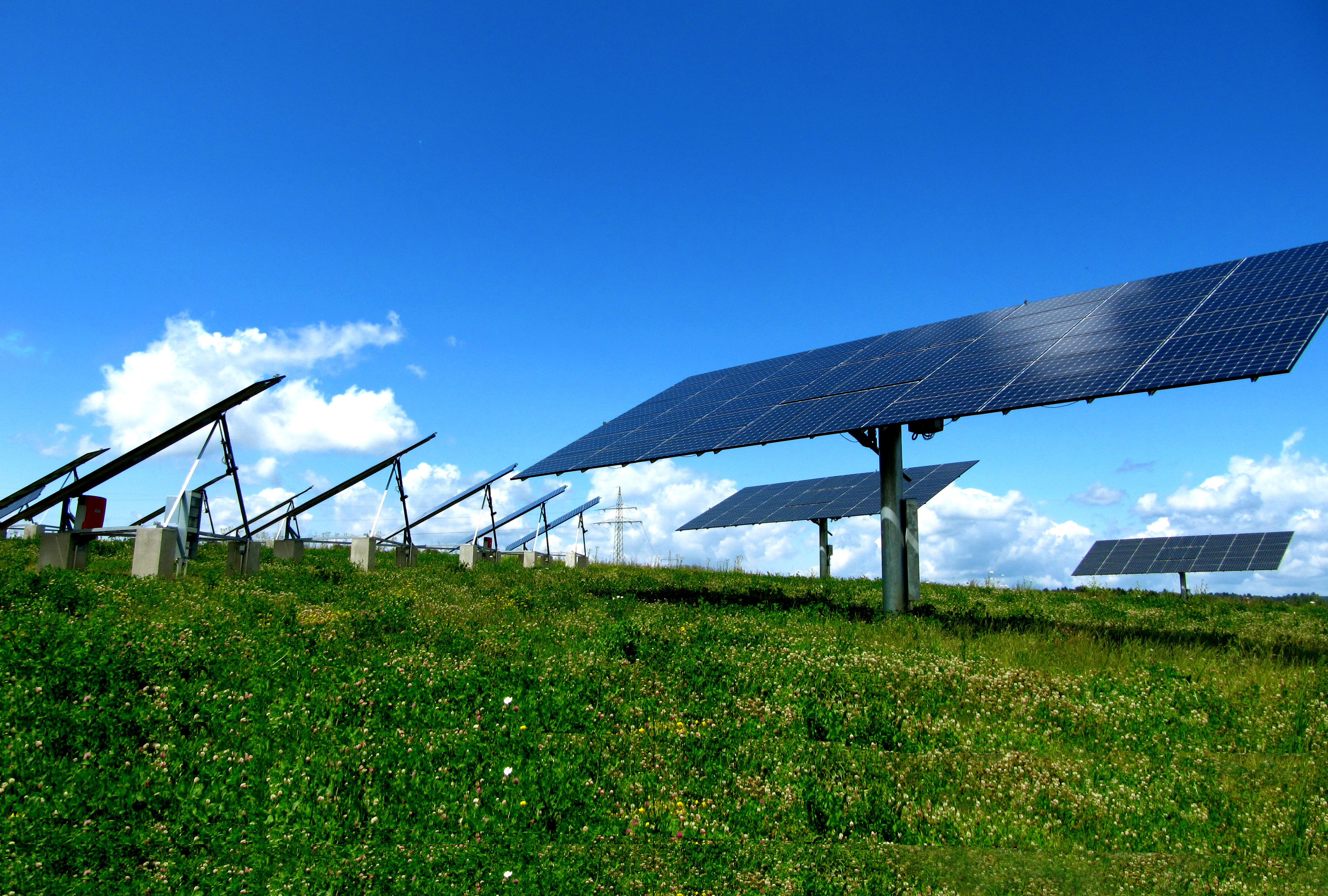
The SolarAPP Foundation is pleased to announce a strategic investment of $2.5 million from Realize Impact to accelerate the adoption of automated permitting for rooftop solar and home battery installations across the United States. This funding will empower the SolarAPP Foundation to expand its innovative SolarAPP+ platform, which streamlines and standardizes residential solar photovoltaic and battery storage permitting for local governments, reducing wait times and lowering installation costs for municipalities, installers, and customers. Lower costs of clean energy technologies make them more accessible to more Americans, especially those most vulnerable to climate change.
This investment marks a pivotal step in supporting SolarAPP Foundation’s mission to make clean energy more accessible, efficient, and affordable for all Americans. Originally developed by the National Renewable Energy Laboratory (NREL) and the U.S. Department of Energy (DOE), SolarAPP+ is a game-changing technology that automates compliance checks and issues instant permits for rooftop solar and battery storage systems. Currently, more than 230 jurisdictions across the country rely on SolarAPP+ to reduce permitting timelines by an average of 14.5 business days compared to traditional processes.
“We are thrilled to receive this investment from Realize Impact,” said Matthew McAllister, CEO of the SolarAPP Foundation. “With their support, we will expand SolarAPP+ into more communities, ultimately making solar installations faster, safer, and more affordable for homeowners across the nation. This funding will enable us to focus on product development, education and outreach, and supporting jurisdictions to adopt automated permitting processes, helping us all work toward a cleaner energy future.”
Realize Impact’s investment aligns with its commitment to funding initiatives that create tangible environmental and social impacts. By supporting SolarAPP+, Realize Impact is advancing a clean energy solution that has proven capable of driving down soft costs, accelerating solar adoption, and reducing greenhouse gas emissions at the local level. This investment is a concessionary loan, and intended to be catalytic capital that attracts future public and private support for the SolarAPP Foundation. As a non-profit, Realize Impact intends to reinvest all the proceeds from the investment into charities that directly benefit the public.
“We believe in the transformative potential of SolarAPP+ to catalyze solar adoption on a national scale,” said Matt Eldridge, Executive Director of Realize Impact. “This investment not only fosters environmental benefits by enabling clean energy but also bolsters local economies by supporting small businesses looking to expand their clean energy installation businesses. Technology solutions like SolarAPP+ have a unique ability to break down the barriers slowing solar adoption, and we’re excited to be part of this movement.”
The SolarAPP Foundation, an independent nonprofit, expands the reach and capabilities of SolarAPP+ by fostering collaboration with local governments, the solar industry, and community stakeholders. With support from Realize Impact, the Foundation will amplify its efforts to promote SolarAPP+ nationwide, with a focus on underserved communities in the energy transition.
The SolarAPP Foundation invites interested stakeholders and community members to join in its efforts to make solar energy more accessible and affordable for everyone. This investment marks an important milestone in realizing the full potential of solar automation to contribute meaningfully to the nation’s clean energy goals.
SolarAPP Foundation | gosolarapp.org
Realize Impact | realizeimpact.org
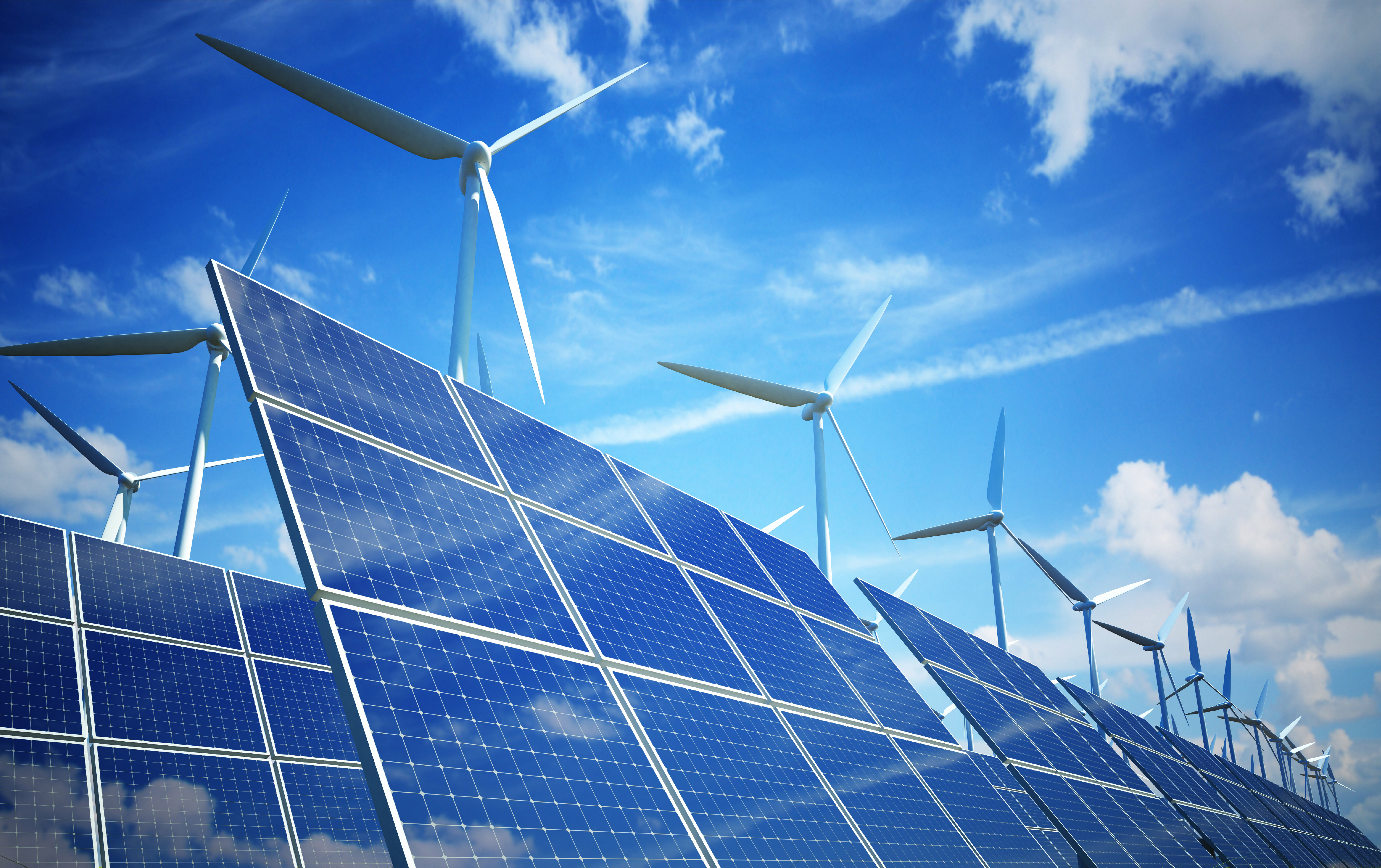
The re-election of President Trump undoubtedly increases uncertainty for the solar industry. However, there are several aspects of President Trump’s past policies, proposed policies, rhetoric, choice of allies, and current state of the industry that counter the doom and gloom story. It’s possible we could be at the beginning of four bright years for solar.
Policies During the First Trump Term
In 2018 the Trump administration implemented tariffs on Chinese modules. These tariffs started the turnaround of domestic solar panel manufacturing that had almost been completely decimated in 2017, which saw a 43% decline to only 970MW (source, source). By Q1 of 2019, domestic solar panel manufacturing had rebounded to 1.4GW of production, growing to 4.4 GW in 2020 (source). This is attributed to not only the Trump tariffs, but also due to Trump’s favorable corporate tax policies (source, source). In fact, they were so successful, they were continued and even expanded under the Biden administration.
In 2018 Trump also implemented tariffs on aluminum extruded products, a major component for most solar panels. Due to the tariffs, domestic aluminum production saw an increase in aluminum smelting of 38%, $6B in new investments including new facilities, and the addition of 4,500 new jobs (source). In hindsight, the growth of domestic aluminum production capacity due to Trump’s tariffs seems prophetic since it aligned perfectly to support the domestic content provision of Biden’s landmark climate legislation, the Inflation Reduction Act (IRA) which supercharged solar panel manufacturing to 31 GW/yr (source).
So, while the Trump years were not necessarily a boon for solar like the Biden years, they were formative and laid the groundwork for where we are today, a $60B industry (source).
Policies to Expect During the Next Trump Term
Historically, Trump’s rhetoric on solar and electric cars was skeptical at best. However, there has been a definitive shift over the last year. His recent relationship with Elon Musk, arguably the biggest domestic promotor of solar, and RFK Jr., an environmental lawyer, along with his statement that he’s “a big fan of solar” during his debate with Vice President Harris are evidence of a shift. As part of his victory speech, Trump expressed his support for RFK Jr. with the caveat of leaving oil and gas alone. This suggests that RFK Jr. might have the president’s ear when it comes to clean renewable solar energy which would fit well with RFK Jr.’s mandate of “Make America healthy again”.
It could be that Trump’s evolution with respect to solar has to do with the fact that many red states have seen significant investments in solar. In fact, as shown below, when overlaying a map of solar farms (source) with the electoral map it is clear that solar is as popular in blue states as it is in red. Take Texas, where Solvari is located, as an example. Trump won here by 14 points while at the same time Texas installed 5.5GW of solar capacity in just the first half of 2024 continuing their trend as a national leader in solar deployment. (source)
Locations of large-scale solar farms

In addition, announcements of billions of dollars of clean energy manufacturing investments spurred by the IRA have almost exclusively been focused in red states (source).
Top 10 states for new clean energy manufacturing investments are in red states
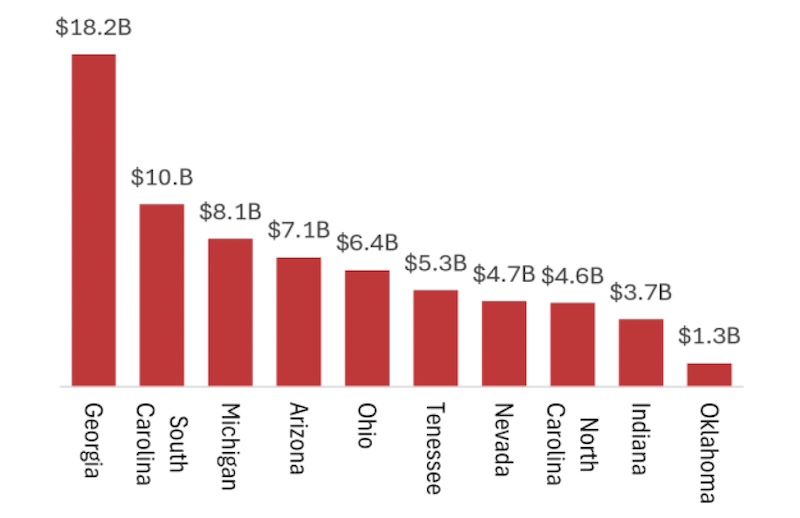
To drive the point home even further, when we look at solar related US manufacturing, there are significant concentrations in the south and the mid-west which went heavily towards Trump in the election (source).
Locations of Solar Related Manufacturing

Taking all these factors into account, it’s not surprising we have seen a change in Trump’s rhetoric. If nothing else, Trump has been consistent in his support of business and economic growth, and his constituents are thriving from the benefit of a growing solar industry.
Trump, Tariffs, and the IRA
While some incentives of the IRA are investments in cleantech, others take the form of tax credits, like the 30% tax credit for residential installations. In 2022, three of the top four states for residential solar installation were red states (AZ, TX, FL) (source). Residents in these states were able to take advantage of the IRA tax credits to become energy independent and disaster resilient. Trump has been consistent in supporting tax credits, both as President and during the campaign. It would be out of character for him to take tax credits away from his supporters. In fact, during his first term, Trump left the federal tax credits for solar intact, electing to neither decrease the rate of decline as was wanted by the solar industry, nor eliminate them as was wanted by some of his Republican colleagues. The current tax credits are not set to begin their step down until well after Trump’s next term is over. Considering his past decisions and current sentiment, it seems unlikely he would make any changes to the current tax incentives for solar, especially for residential solar where Solvari operates.
As discussed earlier, the 10% tax credit for domestic content for solar panels also seems to align with Trump’s America first agenda and proposed tariffs to stimulate domestic manufacturing. While tariffs make goods more expensive, it also brings stability to US manufacturing and the job market. Oversupply of low-cost Chinese solar panels has wreaked havoc on the Chinese solar manufacturing industry with many smaller players being driven out of the market and net losses reported by some of the largest manufacturers (source). Meanwhile, domestic solar panel manufacturing has increased its capacity by 11 GW, a 71% increase, in Q1, 2024 alone (source). Current US policy, spearheaded by Trump and strengthened by the IRA is working, and is providing stability in an otherwise chaotic market.
Trump Tax Cuts
Once again, Trump is promising to bring back tax cuts for both business and individuals. This would free up cash which could be used to fund new solar ventures and put more solar on rooftops. It’s possible that the combination of Biden tax credits and Trump tax cuts provide an unprecedented positive environment to accelerate solar deployment, especially for residential.
Conclusion
The rate of increased energy demand is projected to accelerate over the coming years with the addition of data centers, increased manufacturing, hotter and longer summers, and electric vehicles. The US needs more energy and solar is a proven, reliable, and low-cost solution that can help maintain the grid’s stability during trying times (source). It’s too late to put the genie back in the bottle. Solar is here to stay and it’s an integral and growing part of the US economy. Trump’s pro-business policies, support for US manufacturing, and focus on economic growth, align with the solar industry’s recent strides. Trump’s economic policy hinges on growth, and he doesn’t care where it comes from. We just need to keep doing what we’re doing, and solar will continue to shine.
Solvari | https://www.solvarisolar.com
Solar Nov 15, 2023
The Inflation Reduction Act (IRA) is arguably the most significant piece of renewable energy legislation in American history. It creates a unique opportunity for project developers and investors to accelerate the transition to renewables — and ac....
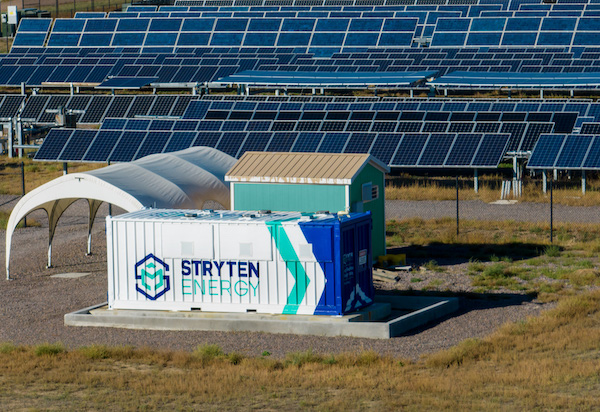
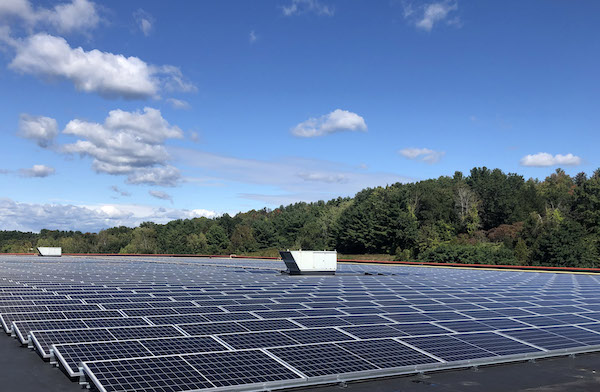
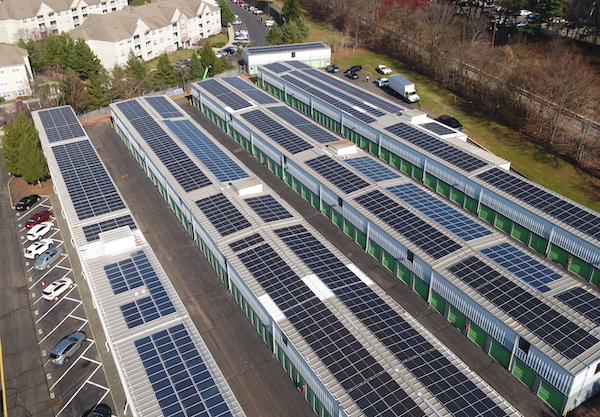
Households hardest hit by inflation and rising energy costs are often the ones that can’t get access to solar energy, and the savings that frequently come with it. Families that rent or live in multifamily housing cannot typically install rooftop s....
One of the biggest hurdles to panel recycling in the U.S. today is that solar glass and cells are not being separated and recovered for their value. Panel shredding is the most common process; at best, it recovers value for aluminum, silver, and copp....
Solar inverters are critical components for photovoltaic (PV) systems. They are responsible for converting direct current (DC) generated by solar modules into usable alternating current (AC) for homes and businesses. However, like any electronic devi....
In the quest for sustainable energy, win....
Picture this: You are sitting around a t....
Battery energy storage systems (BESS) play an increasingly vital role on the power grid as renewable energy generation build-out accelerates. California and Texas continue to be compelling market opportunities for energy storage installations, while ....
Battery shipping delays and supply-chain shortages can shut down your company, hurt your bottom line and reputation, and harm your customers’ operations. This was a key lesson learned during COVID and, more recently, the Baltimore Key Bridge collap....
When evaluating BESS options, it's essential to look beyond the sticker price to fully understand the differences between systems to ensure the most profitable and sustainable investment. While some systems might appear less expensive at first glance....
The renewable energy landscape is changing rapidly. Advances in technology are powering a green energy renaissance in general, and many alternative power sources are being enhanced, developed, and promoted. These breakthroughs can be anticipated to h....
Largely unchanged for decades, the U.S. electricity grid faces immense pressure to support the growing demand for renewable energy sources, electric vehicles, and a rising population. Much of the grid infrastructure is reminiscent of the days when&nb....
There’s nothing stopping us from mowing the lawn with a weed whacker, hammering in nails with a wrench, or eating soup with a fork. But we generally don’t, because we know that using the right tool is a big part of getting the job done. ....